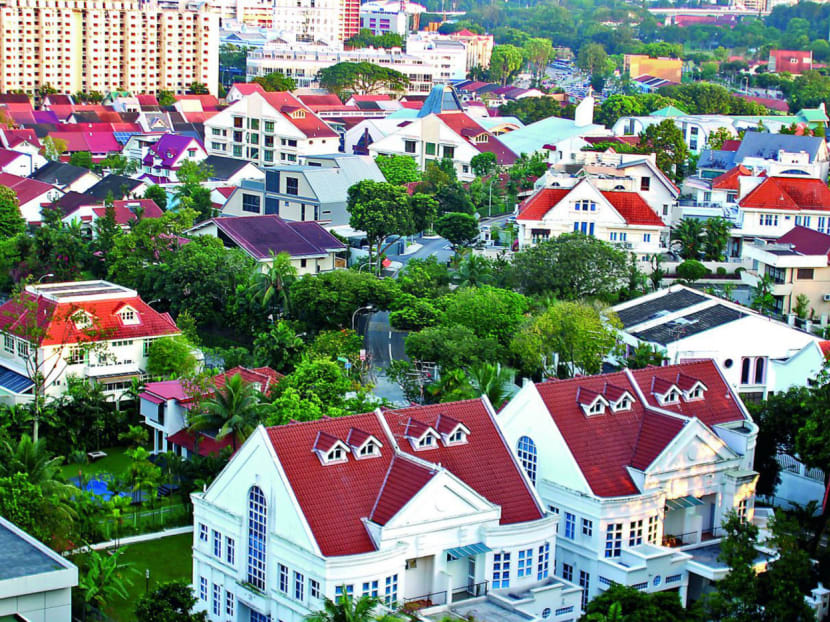More luxury homes go under the hammer as defaults spike
SINGAPORE — Going, going, gone. Slipping property prices, a stricter regulatory environment and poor financial planning are forcing delinquent owners to turn off the lights in their homes permanently, piling on banks’ non-performing loans and leaving a trail of repossessed properties under the auctioneer’s gavel.

TODAY file photo
SINGAPORE — Going, going, gone. Slipping property prices, a stricter regulatory environment and poor financial planning are forcing delinquent owners to turn off the lights in their homes permanently, piling on banks’ non-performing loans and leaving a trail of repossessed properties under the auctioneer’s gavel.
The number of residential properties being put up for auction by banks, or mortgagee sales, have soared this year as more high-end homeowners unable to meet their monthly payments find themselves unable to dispose of their properties in a lacklustre market.
In the first 10 months of this year, 98 residential properties were put up for auction sale by banks, Colliers International Singapore Research told TODAY. This is about five times the 17 homes they put up for auction in the whole of last year.
Notably, non-landed homes in several prominent residential enclaves featured strongly in mortgagee listings this year, said Colliers. These include units at Reflections at Keppel Bay, Turquoise at Sentosa Cove and Stevens Court on Stevens Road.
The jump in forced house sales comes amid a spike in local banks’ non-performing loans (NPL), due primarily to defaults by mostly high-end property owners.
United Overseas Bank said last month its housing NPLs rose to S$502 million in its fiscal third quarter, up from S$295 million in the year-ago period, mainly because of “borrowers investing in a particular high-end residential project in Singapore”. It did not name the development concerned.
Likewise, at the Oversea-Chinese Banking Corporation Limited, housing NPLs climbed to S$272 million in the third quarter from S$227 million a year ago, although the consolidation of OCBC Wing Hang’s portfolio also contributed to the rise.
Analysts say while the market has indeed become unfavourable for high-end homeowners following the introduction of stricter regulations that has since led to sliding property prices, some of the problems faced by these owners were borne from their poor financial planning, which left them in a bind after the Total Debt Servicing Ratio kicked in last June.
“If you have maxed out your loan quantum and values have dropped, you will have difficulty refinancing, especially if your credit worthiness is not attractive. There’s a possibility that banks may ask you to pump in more money to top up your value. When someone is not able to do so, that may go into the NPLs,” said Mr Donald Han, managing director of Chestertons Singapore.
Ms Grace Ng, deputy managing director of Colliers International, added: “Amid the stricter regulatory and financing environment, borrowers in default are finding it difficult to sell their properties on their own, as buyers generally remain cautious.”
The high-end residential segment has been hit the hardest by several rounds of cooling measures and tighter loan curbs, denting demand and leaving homes with heftier price tags increasingly out of reach of buyers.
As a result, third-quarter prices for non-landed private homes located in the city centre, or Core Central Region (CCR), have fallen by 5.7 per cent from its recent peak in the first three months of last year, statistics by the Urban Redevelopment Authority showed.
This prompted City Developments Ltd executive chairman Kwek Leng Beng, who is known for his outspoken comments, to warn this week that the high-end segment might face forced “fire sales” if prices decline further.
Commenting on Mr Kwek’s remarks, Mr Han said: “That’s actually quite a danger because it may filter through to the other segments. When you have CCR prices moving downwards faster than price trends in other segments, people will start to expect the fringe areas to reflect that. It is a challenging market right now.”
And with the Government having no intention to remove or tweak property curbs in the near future, prices are bound for greater falls.
“If the measures are in place, prices will trend down a slippery slope. It’s a real scenario that’s happening — more high-end properties have been up in the market for auction. I would expect more to transpire next year,” Mr Han said.
However, as prices slip, opportunities are opening up for buyers to snap up homes at bargain prices.
In the January-October period, 15 residential properties worth a combined S$36.59 million successfully went under the hammer, up from five homes worth S$31.45 million in the whole of last year.
Of those, 11 properties worth S$21.59 million were auctioned through mortgagee sales this year, compared with only two worth S$4.95 million for the entire of 2013.
“In recent months, although demand or transactions have gone down, we have seen an increase in enquiries. As prices adjust and reach a level acceptable to investors, demand will return. So while the coming months may still be challenging, we could see prices reaching the level of acceptance soon,” said Mr Alan Tan, head of Singapore projects at HSR International Realtors.





